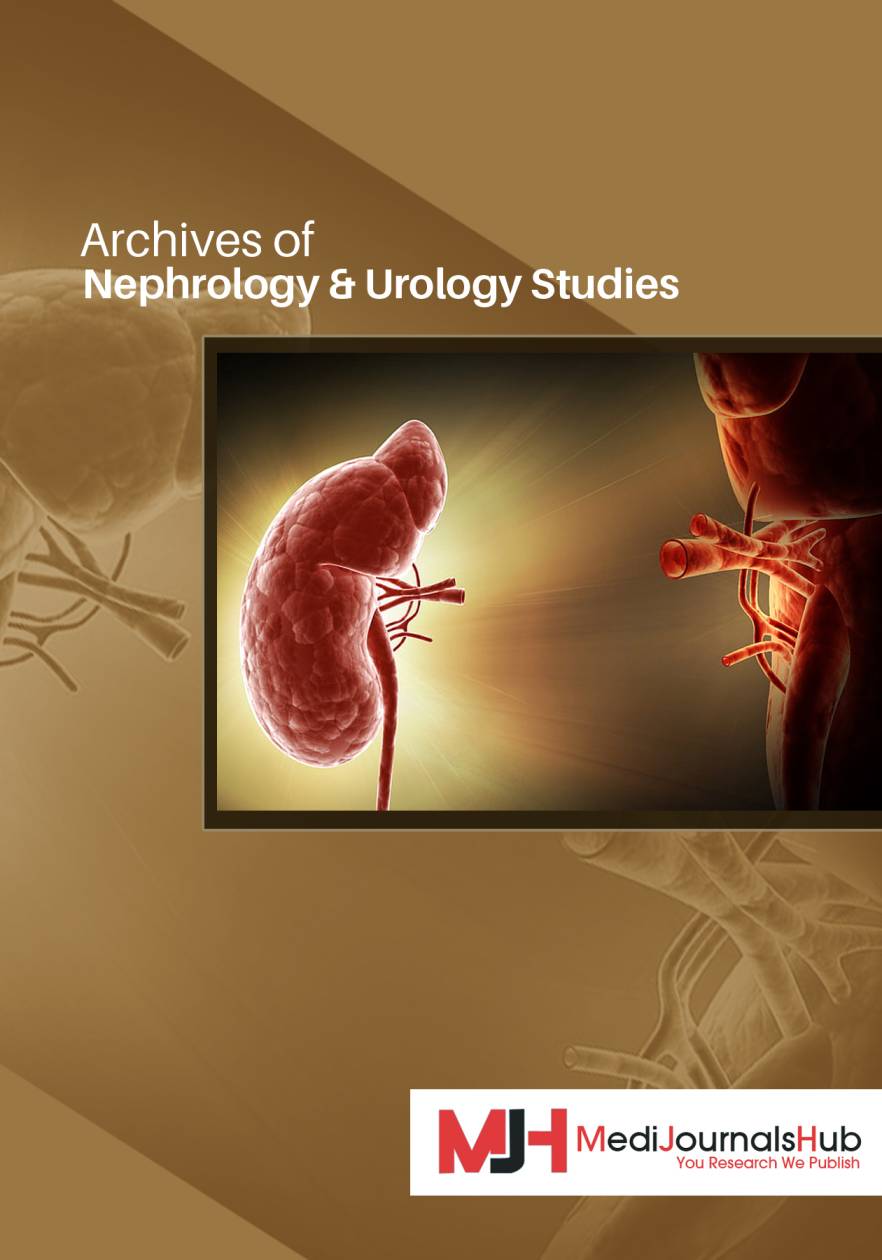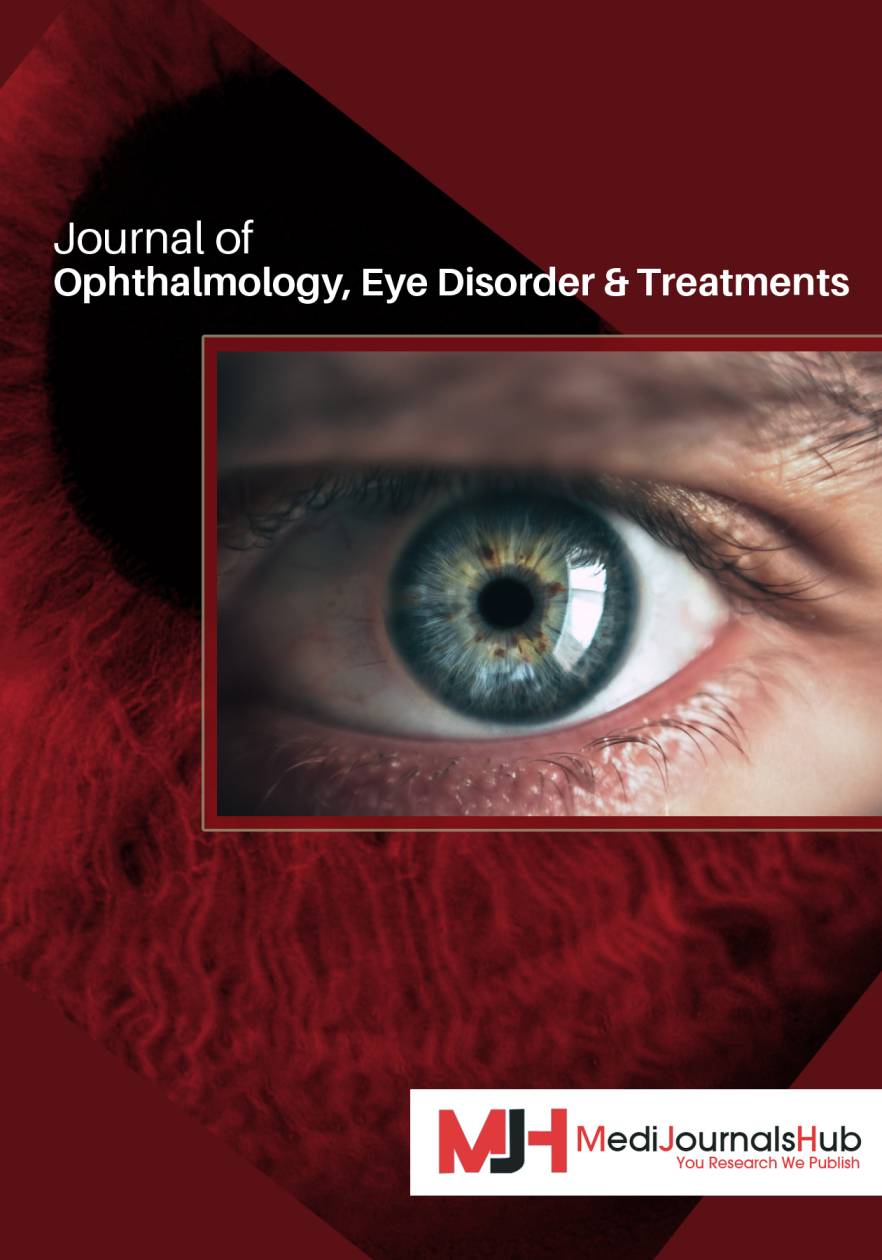- Open-Access Publishing
- Quality and Potential Expertise
- Flexible Online Submission
- Affordable Publication Charges
- Expertise Editorial Board Members
- 3 Week Fast-track Peer Review
- Global Visibility of Published Articles
Rajaie Cardiovascular Medical and Research Tertiary Heart Center Left Main Percutaneous Intervention Registry: RHC-LM Registry
Zahra Hosseini1, Khatereh Dehghani2, Hamid Shahin far3, Ali Sarreshtehdari1, Ehsan Khalilipur1, Bahram Mohebbi1, Mohammad Javad Alemzadeh-Ansari1, Mehran Karimzadeh Jouzdani1, Parvin Mangolian Shahrbabaki4, Ata Firouzi1, Seifollah Abdi1, Mohsen Maadani1, Ali Zahed Mehr1, Reza Kiani1, Farshad Shakerian1, Alireza Rashidinejad1*
1Cardiovascular Intervention Research Center, Rajaie Cardiovascular Medical and Research Center, Iran University of Medical Sciences, Tehran, Iran
2Cardiovascular Intervention Center, Jahrom University of Medical Sciences, Jahrom, Iran
3Rajaie Cardiovascular Medical and Research Center, Iran University of Medical Sciences, Tehran, Iran
4Nursing Research Center, Razi Faculty Nursing and Midwifery, Kerman University of Medical Sciences, Kerman, Iran
*Corresponding Author: Alireza Rashidinejad, Cardiovascular Intervention Research Center, Rajaie Cardiovascular Medical and Research Center, Iran University of Medical Sciences, Vali-Asr Ave, Tehran 1996911101, Iran, Tel: +989133432667; E-mail: alirezarashidinejad@gmail.com
Received date: March 24, 2021; Accepted date: April 12, 2021; Published date: April 16, 2021
Citation: Hosseini Z, Dehghani K, Shahin far H, Sarreshtehdari A, Khalilipur E at all (2021) Rajaie Cardiovascular Medical and Research Tertiary Heart Center Left Main Percutaneous Intervention Registry: RHC-LM Registry. J Card Cardi Sur. 1:01.
Copyright: © 2021 Hosseini Z. This is an open-access article distributed under the terms of the Creative Commons Attribution License, which permits unrestricted use, distribution, and reproduction in any medium, provided the original author and source are credited.
Keywords
Left-main PCI, Registry, Coronary artery bypass grafting
Abstract
Background: Left main is responsible for perfusion of about two-third of myocardium tissue and traditionally the gold standard of revascularization in patients with significant LM lesion was CABG; but in the recent two decades we find out dramatic advances in percutaneous coronary arteries interventions (PCI) and we decided to launch our left main percutaneous intervention registery.
Method: The RHC-LM registry is a retrospective cohort study that recruited patients with LM-PCI (either protected or non-protected LM) from October 2017 to November 2019. This registry is going to illustrate the role of LM-PCI in our center, the prevalence of LM-PCI, indications of LM-PCI, technical approaches, intracardiac imaging modalities, the success rate of coronary interventions in various settings, also reporting intrahospital and at least 1-year follow-up of Major Adverse Cardiovascular Events (MACE) and total mortality.
Results: From October 2017 to November 2019, the recorded data demonstrated that 206 patients with LM lesions underwent PCI. The mean age was 63.7 ± 10 years (27-88 years) and 66% were males. The most common traditional risk factors were hypertension (63%), most common presentation was chronic coronary syndrome (60.3%), the average Ejection Fraction (EF) was 43% (10-55%). PCI was performed by femoral artery access in about 92% of patients; 54.4% were non-protected and 40.8% were protected LM. The mean SYNTAX score was 27.3 (7-54). Iatrogenic dissection has happened in 10 (4.9%) cases. The most technical approach was provisional stenting (50.5%) and in those with 2 stent techniques, the most techniques were TAP (8.3%) and crush (7.3%). The procedural success rate was 97.6%. Periprocedural MI (hs-Troponin I elevation more than 5 times or more than 20% elevation in those who had positive troponin at baseline) was about 37.5%, and emergent CABG was needed in 3 (1.5%) patients. In at least 1-year follow-up, total death, CV mortality and non-CV mortality were 0%, 0% and 0% respectively. During 12 months follow-up, non-fatal MI and stroke happened in 7.2% and 5.8% respectively.
Conclusion: Our registry demonstrated that the composite of total death, non-fatal MI, and stroke during 1-year follow-up in those with LM PCI was low, and also no obvious differences between protected versus unprotected LM PCI, regarding the total death, CV, and non-CV mortality were illustrated.
Abbreviations:
LM: Left Main; CABG: Coronary Artery Bypass Graft; PCI: Percutaneous Coronary Intervention; RHC-LM: Rajaie cardiovascular medical and research center left main registry; MACE: Major Adrverse Cardiovascular Event; CV: Cardiovascular; DES: Drug Eluting Stent; CoCr EES: Cobalt Chromium Everolimus Eluting Stent; MACCE: Major Advers Cardiac and Cerebrovascular Event; MI: Myocardial Infarction; LMCA: Left Main Coronary Artery Disease; RCT: Randomized Clinical Trial; ESC: European Society of Cardiology; STEMI: ST Segment Elevation MI; Non-STEMI: Non ST Segment Elevation MI; TLR: Target Lesion Revascularization; TVR: Target Vessel Revascularization; IVUS: Intravascular Ultrasound; OCT: Optical Coherence Tomography; CVA: cerebrovascular accident; NYHA: New York Heart Association
Introduction
Left main is responsible for perfusion of about two-third of myocardium tissue and traditionally the gold standard of revascularization in patients with significant LM lesion was CABG; but in the recent two decades we find out dramatic advances in Percutaneous Coronary Arteries Interventions (PCI) with thanks to the new technologies and engineering in devices such as stents design, balloons, techniques, and anti-platelet therapy. So, as the role of PCI in LM lesions is growing up, the best revascularization strategy in these patients is being more debatable. Initial randomized trials that compared CABG with PCI in LM lesions, used the first generation of DES; these trials are LEMANS [1] (n=100), SYNTAX trial [2] which included patients with LMCA disease (n=705), PRECOMBAT [3] (n=600), and the report of Boudriot et al. [4] (n=201). In the SYNTAX trial, in the LM subgroup analysis, in 5 years follow-up, there were no significant differences in the major adverse cardiac and cerebrovascular event (MACCE; 37% vs. 31%, P: 0.12), all-cause mortality (13% vs. 15%) or MI (8% vs. 5%) between PCI and CABG. However, the rate of repeat revascularization was higher in the PCI group (27% vs. 16%) and the rate of stroke was higher in the CABG group (2% vs. 4%) [5]. Based on baseline SYNTAX score, the rate of MACCE was similar between PCI and CABG in those with low to intermediate SYNTAX scores (0-32), (31% vs. 32%). In contrast, in those with high SYNTAX scores (≥ 33), the rate of MACCE was significantly higher in the PCI than in the CABG group (47% vs. 30%) [5]. SYNTAX trial is the longest trial that reported the 10 years follow-up of these patients which showed no significant difference in death from all-cause between PCI and CABG (26% vs. 28%) [6].
In the PRECOMBAT trial [3], the 5-year rates of MACCE, death, MI, or stroke were similar between PCI and CABG. However, again, the rate of target vessel revascularization was significantly higher in the PCI group than in the CABG group (12% vs. 6%) [3].
Two recent randomized trials (EXCEL and NOBLE) demonstrated different results regarding the type of revascularization in LM patients.
In the EXCEL trial, among 1905 patients with LM disease and low or intermediate SYNTAX scores (SYNTAX score ≤ 32) were randomly assigned to CABG or PCI with a fluoropolymer-based, CoCr-EES (second-generation stents-XIENCE stent). The primary outcome events were composite of all-cause death, MI, or stroke. In EXCEL, PCI was non-inferior to CABG concerning the primary outcome at 3 years (15.4% vs. 14.7%). The primary end-point events were less common after PCI than after CABG within 30 days (4.9% vs. 7.9%). The individual rates of early MI and major periprocedural adverse events (i.e., bleeding, infection, major arrhythmia, and renal failure) within 30 days were significantly lower with PCI than with CABG. In contrast, fewer primary end-point events occurred in the CABG group than in the PCI group between 30 days and 3 years. One important finding of EXCEL at 3 years follow-up was the trend of PCI to more rate of all-cause mortality than in the CABG group (8.0% vs. 5.8%, P=0.08) [7]. At 5 years, a primary outcome event had occurred in 22.0% of the patients in the PCI group and 19.2% of the patients in the CABG group (P=0.13). Death from any-cause was more frequent in the PCI group than in the CABG group (13.0% vs. 9.9). In the PCI and CABG groups, the incidences of definite cardiovascular death (5.0% and 4.5%, respectively) and MI (10.6% and 9.1%) were not significantly different. All cerebrovascular events were less frequent after PCI than after CABG (3.3% vs. 5.2%)), although the incidence of stroke was not significantly different between the two groups (2.9% and 3.7%). Ischemia-Driven Revascularization (IDR) was more frequent after PCI than after CABG (16.9% vs. 10.0%). So, EXCEL showed that at 5 years follow-up, there was no significant difference between PCI and CABG concerning the rate of the composite outcome of death, stroke, or myocardial infarction in patients with left main coronary artery disease of low or intermediate anatomical complexity and PCI was non-inferior to CABG during a median follow-up of 5.0 years [8].
In NOBLE, 1201 patients with LM disease were randomly assigned to CABG or PCI with the second generation of stents (biolimus-eluting stent, Biomatrix Flex). NOBLE did not consider the SYNTAX score as a prespecified inclusion criterion but, instead, excluded patients with more than three additional non-complex coronary lesions or complex additional coronary lesions (length >25 mm, chronic total occlusion, 2-stent bifurcation, calcified or tortuous vessel morphology). The primary outcome in this trial was MACCE including all-cause death, non-procedural MI, stroke, or repeat revascularization. The 5-year rate of MACCE was significantly higher after PCI than after CABG (29% vs. 19%). At 5 years, the rate of death was similar between PCI and CABG (36% vs. 33%), but non-procedural MI (7% vs. 2%) and any revascularization (16% vs. 10%) were higher in the PCI group. Unexpectedly, the 5-year of stroke tended to be higher in the PCI patients than in CABG patients (7% vs. 16%). NOBLE reported that CABG is superior to PCI during a median follow-up of 5 years [9].
As mentioned above, entirely, EXCEL and NOBLE had a different design, patient numbers, the type of stents, and the primary outcome; so, comparison between these 2 studies should be performed cautionary. However, there is currently no clear-cut (all-or-none) definitive answer regarding the optimal revascularization strategy. More long-term follow-up studies are required to determine the true outcome of each strategy. The Heart Team approach has a key role in guiding individual patient decision-making. Both options of CABG and PCI should be discussed with the patient. Thus, the optimal choice of revascularization modality recommendation for LMCA disease should be made after discussion among the heart team members by considering the general eligibility of PCI or CABG and, additionally, taking into account the total circumstances and comorbidities of each patient.
According to the overall RCTs and meta-analysis, in ESC 2018 Myocardial Revascularization guideline, PCI is considered as an appropriate alternative to CABG in left main coronary artery disease with low to intermediate anatomic complexity (class I recommendation for low SYNTAX scores and class IIa for intermediate SYNTAX scores; the recommendation was against PCI [class III] for high SYNTAX scores). Surgical societies have recently withdrawn their support for this guideline regarding the controversies with the EXCEL trial design.
In this study, we introduce LM PCI (either protected or not protected) prevalence, technique, and patient’s outcome in our center as a tertiary heart center.
Methods
The RHC-LM registry is a retrospective cohort study that recruited patients with LM-PCI (either protected or non-protected LM) from October 2017 to November 2019. This registry is going to illustrate the role of LM-PCI in our center, the prevalence of LM-PCI, indications of LM-PCI, technical approaches, intracardiac imaging modalities, the success rate of coronary interventions in various settings, also reporting intrahospital and at least 1-year follow-up of Major Adverse Cardiovascular Events (MACE) and total mortality. Any coronary intervention in our center has a dedicated form which is fulfilled by the fellow in charge of the orocedure and it is also checked by interventional cardiology attending. For data collection, we assess the recorded data and we separately watch the recorded angiographic procedure if any other data is mandatory. Patients demographic data, known cardiac risk factor, procedural detail such as the access, the catheter used, the wires and devices used all are included. For the patients follow-up data, we asked a trained team to call patients for required data or if there were one event the patients were visited in interventional cardiology clinic to assess the relevant data. The study had been approved by the RHC ethics committee in August 2019. The fact sheet was filled by interventional cardiology fellows and residents under the supervision of their attending after every coronary procedure. The data were then cleaned by the RHC Interventional Cardiology Committee, comprising ten attendings whose task is to investigate and corroborate the legibility and accuracy of the collected information.
Primary and secondary outcomes
The primary outcome events are intrahospital and at least one-year composite of all-cause death, non-fatal MI, and stroke. The secondary outcomes are death from any cause, cardiovascular mortality, non-cardiovascular mortality, non-procedural MI, periprocedural MI, stent thrombosis, CIN, major bleeding (based on Bleeding Academic Research Consortium-BARC classification), access site vascular complications, rehospitalization and repeat revascularization (either Target Lesion Revascularization (TLR), Target Vessel Revascularization (TVR) or another vessel).
Statistical analysis
We retrospectively identified all patients who had undergone LM PCI at Rajaie Cardiovascular, Medical, and Research Center, between 2017 and 2019. The medical records were reviewed for demographic and clinical information and all follow-up information of all patients. Categorical variables are expressed as frequencies and percentages. Continuous variables are presented as the mean ± standard deviation. The Wilcoxon rank-sum and Fisher exact test, as appropriate, were used to comparing the demographic variables. For the statistical analyses, SPSS-version 20 for Windows (SPSS Inc., Chicago, IL) was used. A P value ≤ 0.05 was considered statistically significant.
Results
From October 2017 to November 2019, the recorded data demonstrated that 206 patients with LM lesions underwent PCI. The baseline characteristics are noted in Table 1. The mean age was 63.7 ± 10 years (27-88 years) and 66% were males. The most common traditional risk factors were hypertension (63%), dyslipidemia (44%), diabetes (25.7%), family history of premature atherosclerotic events (16.5%), and smoking (14.5%) respectively. The pattern of the presentation was: chronic coronary syndrome (60.3%), unstable angina (21%), Non-STEMI (8.7%), and STEMI (9.7%) respectively, and the average Ejection Fraction (EF) was 43% (10-55%).
PCI was performed by femoral artery access in about 92% of patients; 54.4% were non-protected and 40.8% were protected LM. Intracoronary imaging such as intravascular ultrasound (IVUS) or optical coherence tomography (OCT), a pre-and-post procedure was performed in only 8% of patients. Mechanical circulatory support (IABP) was used for 1% of patients. The mean SYNTAX score was 27.3 (7-54). The most locations of PCI were LM-LAD (30.6%), LM-LCX (27.2%), aorto-ostial (17%), and LM-LAD-LCX (9.2%) respectively (Table 1). Iatrogenic dissection has happened in 10 (4.9%) cases. The most technical approach was provisional stenting (50.5%) and in those with 2 stent techniques, the most techniques were TAP (8.3%) and crush (7.3%) (Table 1). Resuscitation during the procedure was performed in about 3% of patients. The procedural success rate was 97.6%. Periprocedural MI (hs-Troponin I elevation more than 5 times or more than 20% elevation in those who had positive troponin at baseline) was about 37.5%, and emergent CABG was needed in 3 (1.5%) patients. Vascular complications occurred in 3.5% of patients (hematoma in 6 and retroperitoneal hemorrhage in 1 patient respectively). Contrast-induced nephropathy (elevation of Creatinine level more than 0.5 mg/dl or reduction of GFR more than 20% within 48 hours) happened in 6 (2.9%) and acute stent thrombosis reported in one patient (0.5%) during the procedure (DK-crush technique) which led to cardiac arrest but the procedure was ended successfully. In at least 1-year follow-up, total death, CV mortality and non-CV mortality were 0%, 0% and 0% respectively (Table 1). During 12 months follow-up, non-fatal MI and stroke happened in 7.2% and 5.8% respectively. Rehospitalization (cardiac and non-cardiac related) occurred in 11.3% (95% of rehospitalization was cardiac-related); so, the primary outcome events including intrahospital and at least one-year composite of all-cause death, non-fatal MI, and stroke was about 13% and the rate of TLR or TVR was about 4%.
In at least one-year follow-up, among patients with baseline New York Heart Association (NYHA) functional class II, about 20% of them being asymptomatic, and in those with F/C III and IV at baseline, 50% and 20% of them had significant improvement in their symptoms respectively (P < 0.005).
| Total Results (Including Iatrogenic Dissection) | |
| Age (years): (Mean ± SD) | 63.7 ± 10 |
| Male: (%) | 166 (66%) |
| DMa: (%) | 53 (25.7%) |
| HTNb: (%) | 130 (63.1%) |
| DLPc: (%) | 91 (44.2%) |
| FHd: (%) | 34 (16.5%) |
| Current Smoker: (%) | 30 (14.6%) |
| Presentation: | |
| Chronic coronary syndrome: (%) | 125 (60.3%) |
| Non-STE ACS-U/A: (%) | 61 (30%) |
| STEMI: (%) | 20 (9.7%) |
| Location: | |
| Ostial-shaft | 35 (17%) |
| LM-LCX | 56 (27.2%) |
| LM-LAD | 63 (30.6%) |
| LM-LAD-LCX | 19 (9.2%) |
| Techniques: | |
| simple wire | 67 (32.5%) |
| provision | 104 (50.5%) |
| TAP | 17 (8.3%) |
| DK crash | 5 (2.4%) |
| mini-crash | 10 (4.9%) |
| culotte | 2 (1%) |
| V stenting | 1 (0.5%) |
| Periprocedural MI | Yes: 77 (37.5%) |
|---|---|
| No: 127 (61.7%) | |
| Acute success rate | Yes: 201 (97.6%) |
| No: 5 (2.4%) | |
| Imaging | OCT: 1 (2%) |
| FFR: 1 (0.5%) | |
| IVUS: 12 (5.8%) | |
| 12-month total mortality | 0% |
| 12-month cardiovascular mortality | 0% |
| 12-month non-cardiovascular mortality | 0% |
| 12-month TLRe or TVRf | 4(4%) |
| a: Diabetic Mellitus; b: Hypertension; c: Hyperlipidemia; d: Positive Family history of Coronary artery disease; e: Target lesion revascularization; f: Target vessel revascularization | |
Table 1: Baseline Demographic Features and Total Results after the Procedure.
Protected vs. unprotected LM PCI
Among total LM PCI, 54.4% were unprotected and 40.8% were protected LM. There were no significant differences in the baseline characteristics of both groups (Table 2). In the protected group, about 65% had a high Syntax score vs. 12% in the unprotected group which was statistically significant. Post PCI, NYHA functional class III was 7% in protected vs. 5% in unprotected patients in at least 1-year follow-up. Periprocedural MI was 38% in protected vs. 37.5% in non-protected procedures and most of the MI in protected patients occurred in those with higher Syntax score. Resuscitation during PCI occurred in 1% of the protected vs. 4% in the unprotected group. In at least one-year follow-up, total death and cardiovascular-related death were 0% respectively in protected vs. 0% in unprotected patients (P-value: 1). During 1-year follow-up, non-fatal MI happened in 3.6% of unprotected LM PCI vs. 3.6% in protected PCI (P-value: 0.95); in this period, the rate of cerebrovascular accidents (CVA) was similar (P-value: 1). Also, the rate of target lesion revascularization was 2.7% vs. 1.2% respectively in unprotected LM PCI in compared with protected PCI (P-value: 0.42) as noted in Table 3. Emergent CABG was needed in 2.5% of unprotected groups while in a protected group it was zero percent.
| Unprotected LMa: (%) 112(54.4%) | Protected LM: (%) 84(40.8%) | Iatrogenic dissection:(%) 10(4.9%) | |
| AGE (years): (Mean ± SD) | 62.9 ± 12 | 65.8 ± 7.8 | 54.6 ± 7 |
| SEX: Male: (%) | 42(37.5%) | 24(28.6%) | 4(40%) |
| DMb: (%) | 21(18.8%) | 30(35.7%) | 2(20%) |
| HTNc: (%) | 69(61.6%) | 56(66.7%) | 5(50%) |
| DLPd: (%) | 46(41.1%) | 40(47.6%) | 5(50%) |
| FHe: (%) | 19(17.0%) | 15(17.9%) | 0 (0%) |
| Current Smoker: (%) | 15(13.4%) | 13(15.5%) | 2(20%) |
| Presentation | |||
| Chronic coronary syndrome: (%) | 62(55.4%) | 57(67.9%) | 6(60%) |
| Non-STE ACS: (%) | 37(33.0%) | 23(27.3%) | 1(10%) |
| STEMI: (%) | 13(11.6%) | 4(4.8%) | 3(30%) |
| a: Left main; b: Diabetic Mellitus; c: Hypertension; d: Hyperlipidemia; e: Positive Family history of Coronary artery disease | |||
Table 2: Baseline Demographic Information based on the LM protection.
| Unprotected LMa: (%) 112 (54.4%) | Protected LM: (%) 84 (40.8%) | P-value* | Iatrogenic dissection: (%) | |
| 12-month cardiovascular mortality: (%) | 0(0.0%) | 0(0.0%) | 1 | 0(0.0%) |
| 12-month non-fatal MIb: (%) | 4(3.6%) | 3(3.6%) | 0.95 | 0(0.0%) |
| 12-month CVAc: (%) | 3(3.0%) | 2(2.8%) | 1 | 0(0.0%) |
| TLRd: (%) | 3(2.7%) | 1 (1.2%) | 0.42 | 1(10.0%) |
| a: Left main; b: Myocardial infarction; c: Cerebrovascular accident; d: Target lesion revascularization | ||||
Table 3: At least 1-year Major Adverse Cardiovascular Event.
Discussion
In this retrospective, observational cohort study, among 206 patients with LM lesion who were recruited from October 2017 to November 2019, we demonstrated that like many recent long-term randomized trials and meta-analysis there are no significant differences between the type of revascularization (either PCI or CABG) in LM patients regarding the total mortality, CV mortality, and non-cardiovascular mortality irrespective of the SYNTAX score during 1-year follow-up. Athappan compared the long-term outcomes between PCI using first-generation DES and CABG in unprotected LM patients; this analysis included 21 observational studies and 3 RCTs, for a total of 14203 patients. At 5 years, there were no significant differences between PCI and CABG in all-cause death, cardiac death, or non-fatal MI; PCI was associated with significantly lower 5 years stroke and cumulative MACCE but a greater rate of TVR in compared with CABG. Patients risk stratification regarding SYNTAX score, PCI and CABG had nonsignificant different rates of all-cause mortality, MI, and MACCE in the lower two quartiles of the SYNTAX score (<32); but, with more score (>32), CABG was associated with dramatically better outcomes at 3 years [10]. In another meta-analysis of 4 RCTs of PCI versus CABG for unprotected LM disease, the 1-year rate of MACCE was non-significantly different between PCI and CABG (14.5% vs. 11.8%), although TVR was significantly higher in PCI groups. There were no significant differences in the rates of all-cause mortality (3% vs. 4.1%) and MI (2.8% vs. 2.9%) between the groups [11].
In our study which is a monocentric study with at least 1-year follow-up of patients with LM revascularization, total death including CV and non-CV death was zero regardless of the type of the revascularization, total revascularization, based line NYHA functional class, and ejection fraction. Drug-eluting stents (2nd and 3rd generation stents) were used in all patients. One obvious exceptional difference between our study and the previous studies is the rate of the repeat revascularization of the target lesion or target vessel which in all the previous trials, was significantly higher and was more prominent in the PCI group; but in this study, the rate of TLR or TVR was not remarkable (4%), which seems that the etiology of this finding is the limited follow-up duration. In sub-group analysis which compared protected LM (40.8%) with unprotected LM (54.4%) PCI, although most patients in both groups presented with the Chronic Coronary Syndrome (CCS), but more patients in the unprotected group presented with unstable angina, non-ST segment elevation and ST-Segment Elevation Myocardial Infarction (STEMI) in compared to protected LM PCI. As noted above, in at least a 1-year follow-up, total cardiovascular mortality was zero in both groups and the rate of non-fatal MI, CVA, and TLR was not different significantly between the groups.
Finally, the rate of major bleeding (based on BARC classification) was not notable and was similar between both groups and the rate of rehospitalization was slightly higher in the unprotected group which was not statistically significant.
Conclusion
The debate between the type of LM revascularization (PCI or CABG) is an ongoing issue despite long-term randomized trials; until now, the trials have been shown no differences in long-term total and cardiovascular mortality between PCI and CABG in LM lesions but PCI is associated with more chance of revascularization. Our registry demonstrated that the composite of total death, non-fatal MI, and stroke during 1-year follow-up in those with LM PCI was low, and also no obvious differences between protected versus unprotected LM PCI, regarding the total death, CV, and non-CV mortality were illustrated.
Limitations of the Study
Regarding that, the study is an observational retrospective, and monocentric registry with limited follow-up, the role of the bias should be considered; also, the numbers of the recruited patients were limited in comparison with recent randomized trials; but as the study is a registry, we would include and follow more patients for a longer duration.
References
1. Buszman PE, Kiesz SR, Bochenek A, Peszek-Przybyla E, Szkrobka I, et al. Acute and late outcomes of unprotected left main stenting in comparison with surgical revascularization. J Am Coll Cardiol. 51(5): 538-545 (2008)
2. Serruys PW, Morice MC, Kappetein AP, Colombo A, Holmes DR, et al. Percutaneous coronary intervention versus coronary-artery bypass grafting for severe coronary artery disease. N Engl J Med. 360(10): 961-972 (2009).
3. Park SJ, Kim YH, Park DW, Yun SC, Ahn JM, et al. Randomized trial of stents versus bypass surgery for left main coronary artery disease. N Engl J Med 364: 1718-1727 (2011).
4. Boudriot E, Thiele H, Walther T, Liebetrau C, Boeckstegers P, et al. Randomized comparison of percutaneous coronary intervention with Sirolimus-eluting stents versus coronary bypass grafting in unprotected left main stem stenosis. J Coll Cardiol. 57(5): 538-545 (2011).
5. Mohr FW, Morice MC, Kappetein AP, Feldman TE, Ståhle E, et al. Coronary artery bypass graft versus percutaneous coronary intervention in patients with three-vessel disease and left main coronary disease: 5-year follow-up of the randomized, clinical SYNTAX trial. Lancet 381(9867): 629-638 (2013).
6. Thuijs DJFM, Kappetein AP, Serruys PW, et al. Percutaneous coronary intervention versus coronary artery bypass grafting in patients with three-vessel or left main coronary artery disease: 10-year follow-up of the multicentre randomised controlled SYNTAX trial. Lancet. 394(10206): 1325-1334 (2019).
7. Stone GW, Sabik JF, Serruys PW, Simonton CA, Généreux P, et al. Everolimus-eluting stents or bypass surgery for left main coronary artery disease. N Engl J Med. 375(23): 2223-2235 (2016).
8. Stone GW, Kappetein AP, Sabik JF, Pocock SJ, Morice MC, et al. Five-Year Outcomes after PCI or CABG for left main coronary disease. N Engl J Med. 381(19): 1820-1830 (2019).
9. Holm NR, Mäkikallio T, Lindsay MM, Spence MS. Percutaneous coronary angioplasty versus coronary artery bypass grafting in the treatment of unprotected left main stenosis: Updated 5-year outcomes from the randomised, non-inferiority NOBLE trial. Lancet. 395(10219): 191-199 (2020).
10. Athappan G, Patvardhan E, Tuzcu ME, Ellis S, Whitlow P, et al. Left main coronary artery stenosis: a meta-analysis of drug-eluting stents versus coronary artery bypass grafting. JACC Cardiovasc Intec. 6(12): 1219-1230 (2013).
11. Capodanno D, Stone GW, Morice MC, Bass TA, Tamburino C, et al. Percutaneous coronary intervention versus coronary artery bypass graft surgery in left main coronary artery disease: A meta-analysis of randomized clinical data. Jam Coll Cardiol. 58(14): 1426-1432 (2011).





